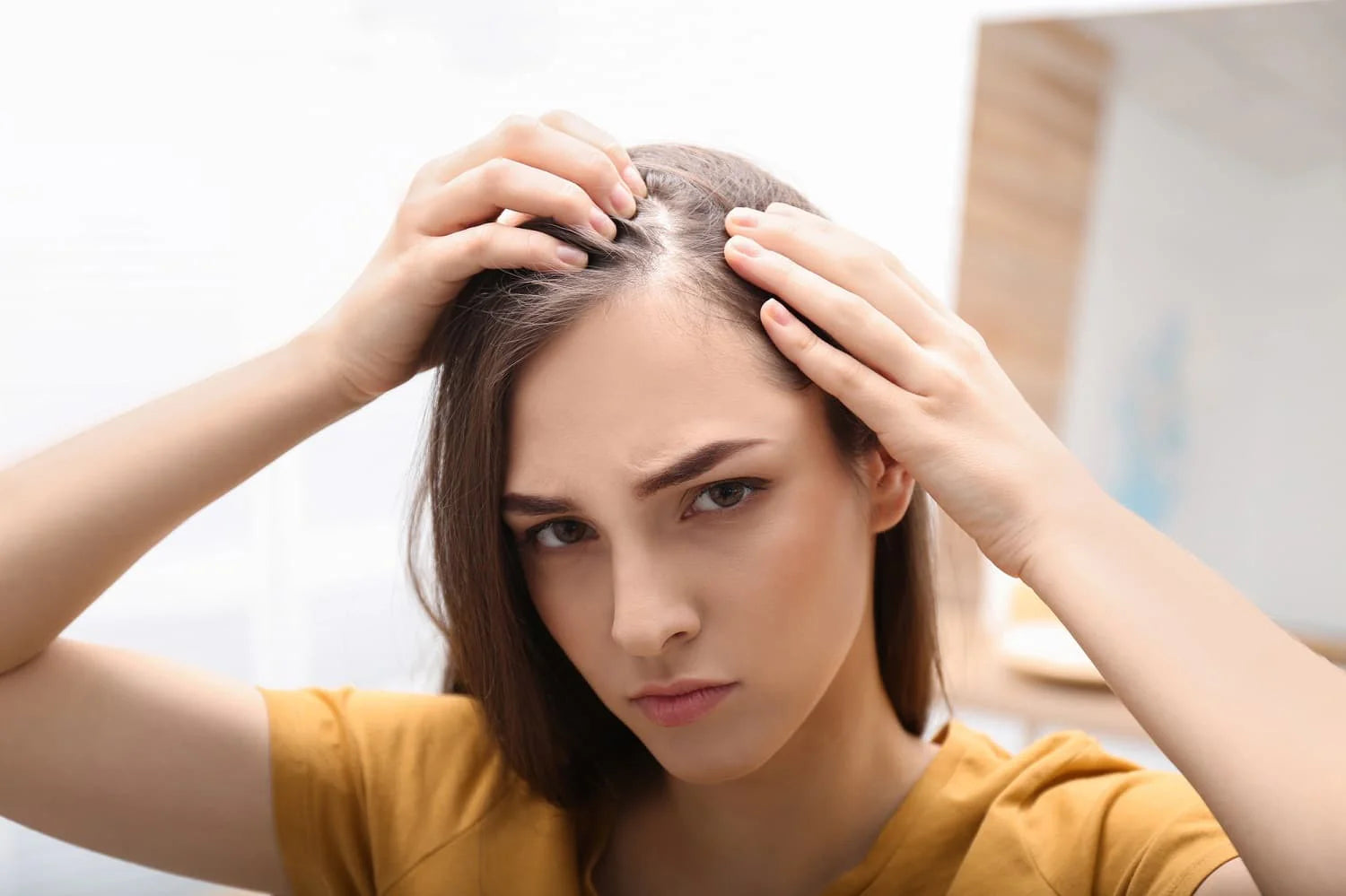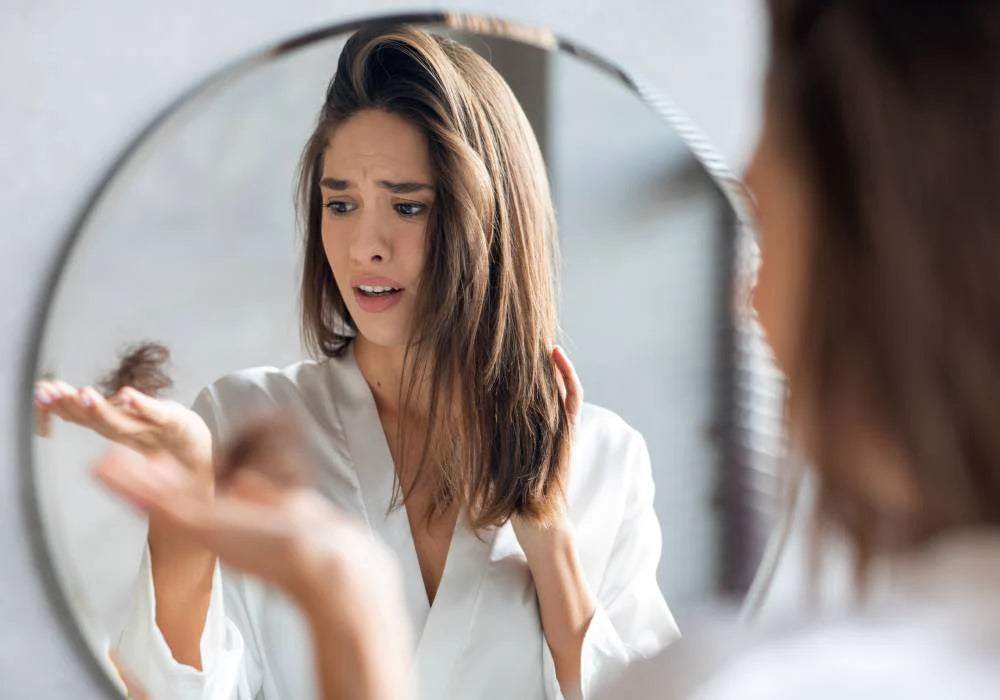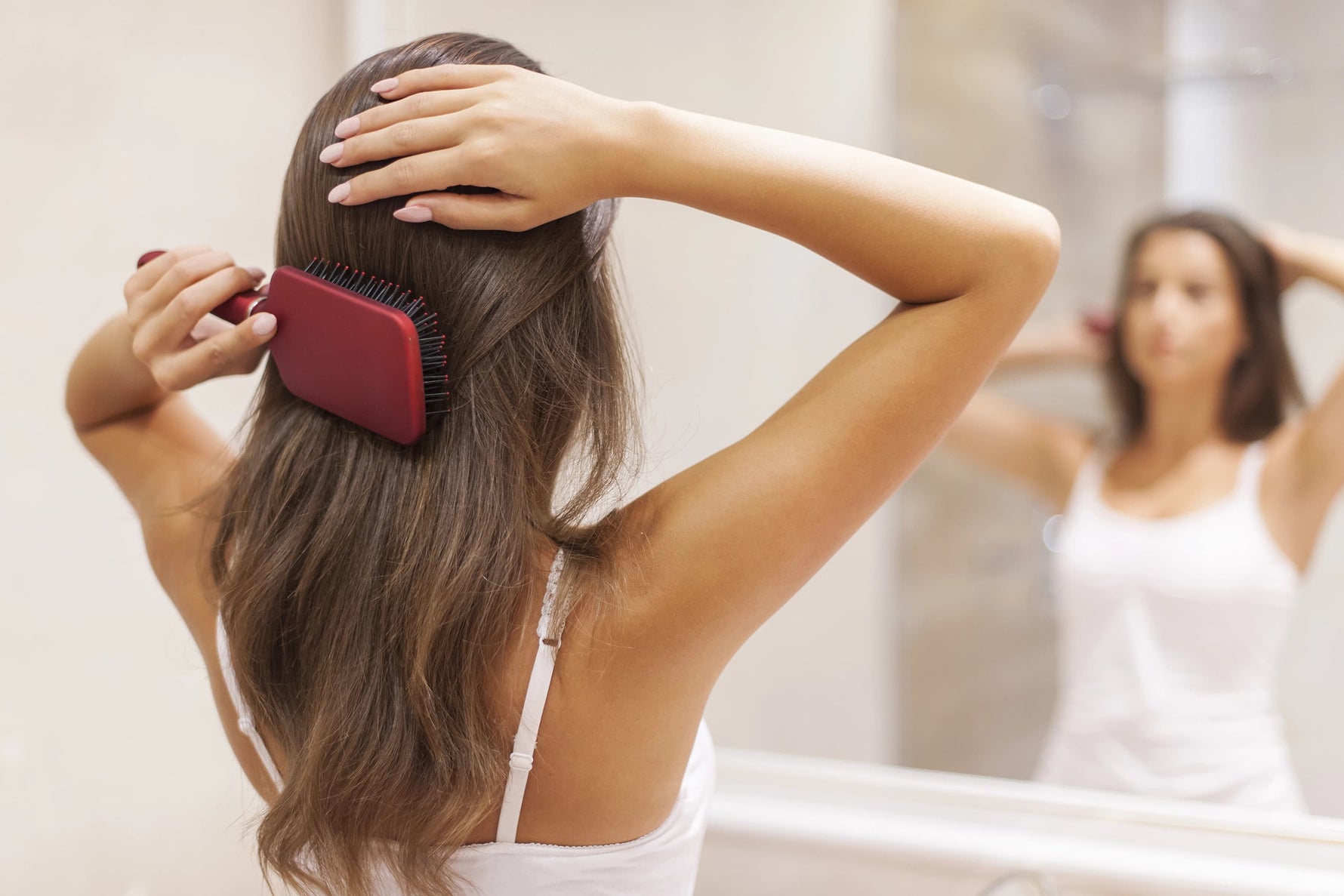Our Blog

Our Blog
Red Light Therapy: The Future of Hair Regeneration?
by My Store Admin on Dec 05, 2024
Hair loss affects millions of people around the world and finding an effective solution is a priority for those facing this problem. One of the most promising innovations is red light therapy , also known as Low-Level Laser Therapy (LLLT) . This non-invasive treatment is gaining popularity for its benefits in hair regeneration and improving scalp health.
What is red light therapy?
LLLT uses specific wavelengths of red light to penetrate the skin and stimulate hair follicles. This process improves blood circulation, reduces inflammation, and increases cellular energy production, helping damaged follicles to produce hair again.
Keywords:
red light therapy for hair.
laser treatment for hair loss.
hair regeneration with LED light.
How does it work?
Red light, generally in the range of 630 to 670 nanometers, acts directly on the cells of the scalp:
Increases blood circulation , bringing more nutrients to the hair follicles.
Stimulates mitochondrial activity , essential for the production of cellular energy (ATP).
Prolongs the hair growth phase (anagen) and reduces hair loss.
Advantages over other treatments
It is a non-invasive and safe treatment.
It does not require chemical medications, making it ideal for people looking for natural alternatives.
It can be used in combination with other treatments, such as minoxidil or derma roller, to maximize results.
Most popular devices
There are several options on the market that adapt to different needs:
HairRevive Pro - High Frequency Hair Comb: portable devices that combine red light with scalp massage.
DRS 192 Titanium Microneedle Derma Roller: Designed with 192 high-quality titanium needles, this advanced device stimulates hair follicles, promotes growth and combats hair loss.
Conclusion
Red light therapy represents a revolution in the treatment of hair loss. Although results vary from person to person, many users report visible improvements in as little as 3 to 6 months. Consider integrating this treatment into your routine to strengthen your hair and restore its vitality.

Our Blog
Natural Remedies for Hair Loss: Do Rosemary Oil and Other Ingredients Work?
by My Store Admin on Nov 12, 2024
With the rise of natural products, rosemary oil has become one of the most popular options to combat hair loss. But does it really work?
The impact of rosemary oil
Rosemary has stimulating properties that improve blood circulation in the scalp, promoting hair growth. Recent studies have shown that rosemary oil can be as effective as minoxidil in treating androgenetic alopecia, without causing side effects such as irritation.
Keywords:
rosemary oil for hair.
natural remedies for hair loss.
How to use rosemary to regenerate hair.
Other effective natural ingredients
Aloe Vera: Moisturizes and soothes the scalp, reducing dandruff and promoting a healthy environment for hair growth.
Castor oil: rich in fatty acids that strengthen hair and protect it against breakage.
Biotin: This essential supplement improves hair and nail health.
How to use them correctly
Mix rosemary oil with a carrier oil such as coconut or jojoba, and apply to your scalp with a gentle massage.
Use fresh aloe vera as a scalp mask once or twice a week.
Apply castor oil to the ends and scalp to prevent breakage and strengthen follicles.
Conclusion
Natural remedies like rosemary oil are effective and safe alternatives to combat hair loss. Although results may take longer than chemical treatments, consistency and proper use can offer long-lasting benefits.

Our Blog
How much does diet affect hair loss? Essential nutrients you need
by My Store Admin on Nov 06, 2024
Introduction
"We are what we eat" also applies to hair. A diet deficient in essential nutrients can lead to hair weakening and loss. In this article, you will discover the key foods and vitamins to maintain a healthy mane.
Essential nutrients for strong hair
1. Proteins
Hair is mainly made of keratin, a protein. A protein-rich diet ensures its strength and elasticity.
Key sources : Egg, chicken, fish, legumes.
2. Biotin (Vitamin B7)
It is crucial for keratin production and combats hair weakness.
Key sources : Almonds, avocados, salmon.
3. Iron
It transports oxygen to the hair follicles, preventing anemia, a common cause of hair loss.
Key sources : Spinach, lentils, lean red meat.
4. Zinc
Helps in the repair and growth of hair tissue.
Key sources : Seafood, nuts, pumpkin seeds.
5. Omega-3
Promotes hair hydration and reduces scalp inflammation.
Key sources : Fatty fish such as salmon and tuna.
What foods should you avoid?
Refined sugars : Contribute to hormonal imbalances.
Ultra-processed foods : They lack essential nutrients and affect hair health.
Are supplements necessary?
Although it is ideal to obtain nutrients from food, supplements such as biotin and collagen can be helpful if there are specific deficiencies.
Conclusion
Your diet has a direct impact on the health of your hair. Eating a diet rich in key nutrients can prevent hair loss and promote healthy growth.

Our Blog
Alopecia: Causes, Types and How to Combat It
by My Store Admin on Oct 16, 2024
Alopecia, or hair loss, affects both men and women and can have a significant impact on self-esteem. Understanding the causes and available treatments is essential to combat it effectively.
What is alopecia?
Alopecia is a condition that causes hair loss in different areas of the body, mainly on the scalp. There are several types, each with specific causes and characteristics.
Keywords:
alopecia, hair loss, alopecia treatment, hair regeneration.
Most common types of alopecia
Androgenetic alopecia:
Known as common baldness, it is hereditary and affects more men than women.
It is due to the action of the hormone DHT, which weakens the hair follicles.
Alopecia areata:
Of autoimmune origin, it causes patchy hair loss.
It may be related to stress or genetic factors.
Telogen effluvium:
Caused by stress, hormonal changes or nutritional deficiencies.
It is usually temporary and the hair may recover over time.
Scarring alopecia:
Hair follicles are destroyed due to inflammation or damage, resulting in irreversible hair loss.
Main causes of alopecia
Genetic factors: Especially in androgenetic alopecia.
Stress and emotional trauma: They influence telogen effluvium and alopecia areata.
Nutritional deficiencies: Lack of iron, biotin or zinc.
Hormonal changes: Pregnancy, menopause or thyroid imbalances.
Autoimmune diseases: Where the immune system attacks the hair follicles.
How to combat alopecia: Effective treatments
Topical treatments and medications:
Minoxidil: Stimulates hair growth by increasing blood flow to the follicles.
Finasteride: Reduces DHT production in men.
Innovative therapies:
Red light therapy (LLLT): Stimulates follicles and promotes hair growth.
Platelet Rich Plasma (PRP): Plasma injections that regenerate follicles.
Nutritional supplements:
Biotin, zinc and collagen: Help strengthen hair from the inside.
Natural remedies:
Rosemary oil and aloe vera, known for their scalp stimulating properties.
Prevention and care:
Maintain a balanced diet rich in proteins and antioxidants.
Avoid tight hairstyles and excessive use of heat.
Tips for choosing the right treatment
Identify the specific cause of your hair loss through a medical consultation.
Opt for treatments backed by clinical studies.
Consider a combination of therapies to maximize results.
Conclusion
Alopecia can be a challenge, but with the right treatment, it is possible to stop its progression and even reverse it in some cases. Whether through medication, innovative therapies or natural care, the path to hair recovery begins with an accurate diagnosis and the adoption of personalized solutions.

Our Blog
Is stress really a cause of hair loss? How to manage it to prevent hair loss
by My Store Admin on Sep 25, 2024
Introduction
Stress is a determining factor in our physical and emotional health, and its impact on hair loss is a problem that affects millions of people. This article addresses how stress can influence hair cycles, the conditions it triggers, and how to deal with it to protect hair health.
How does stress affect the hair cycle?
Hair goes through three phases: growth (anagen), transition (catagen) and resting (telogen). When we are under stress, this dynamic is altered:
Telogen effluvium : Stress pushes a large number of hair follicles into the telogen phase prematurely, causing massive hair loss. This condition usually appears a few months after a stressful event.
Alopecia areata : An autoimmune disease in which stress can act as a trigger, causing the immune system to attack hair follicles.
Trichotillomania : A psychological disorder that leads to hair pulling out in response to stress or anxiety.
What types of stress affect hair?
Acute stress : Such as an accident or personal loss.
Chronic stress : Prolonged tension related to work or financial problems. Both types can cause hair loss if not managed properly.
How to manage stress to protect your hair
Implement relaxation techniques
Practice meditation or mindfulness for 10-15 minutes a day.
Perform deep breathing exercises to reduce cortisol.
Adopt a healthy lifestyle
Exercise regularly to improve blood circulation, which benefits hair follicles.
Prioritize restful sleep (7-8 hours per night), since the body recovers and regenerates during rest.
Nutrient-rich diet
Make sure you eat foods rich in zinc, biotin, iron and protein, which are essential for hair growth.
Consult a specialist
If stress and hair loss persist, visit a dermatologist or therapist to explore medical treatments or psychological support.
Conclusion
Stress has a real impact on hair health, but it is not irreversible. By adopting stress management strategies and maintaining a healthy routine, you can minimize hair loss and restore its natural strength.

Our Blog
Hair care routines: How to strengthen your hair and prevent hair loss
by My Store Admin on Sep 01, 2024
Introduction
A well-structured hair routine is key to strengthening hair and preventing hair loss. This article offers you a step-by-step guide to maintaining healthy and resilient hair, focusing on effective products, techniques and habits.
Step by step for an ideal hair routine
1. Proper cleaning
Use a mild, sulfate-free shampoo to avoid scalp irritation.
Wash your hair with warm or cold water, never hot, to avoid dehydrating it.
Wash the scalp by massaging with your fingertips to stimulate blood circulation.
2. Hydration and conditioning
Apply a conditioner or mask rich in biotin, keratin or essential oils such as argan or coconut.
Leave the treatments on for at least 5 minutes for deep hydration.
3. Nutrition with intensive treatments
Use serums or oils that strengthen the hair follicle. Ingredients such as niacinamide and peptides are ideal for combating hair loss.
Apply night hair treatments once a week.
4. Hair massages
Use your hands or devices such as derma rollers to massage your scalp. This stimulates blood flow and encourages hair growth.
Common mistakes to avoid
Using hot tools without heat protection.
Using very tight hairstyles, which can weaken the hair and cause traction.
Over-washing removes essential natural oils.
Conclusion
Taking care of your hair with a proper routine can make the difference between weak, brittle hair and strong, healthy hair. Stay consistent and tailor your routine to the specific needs of your scalp and hair.

